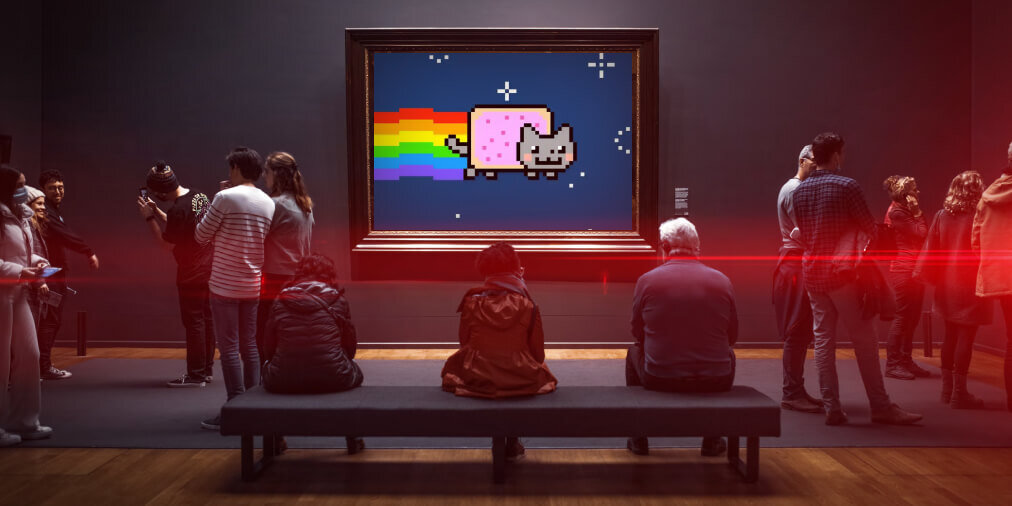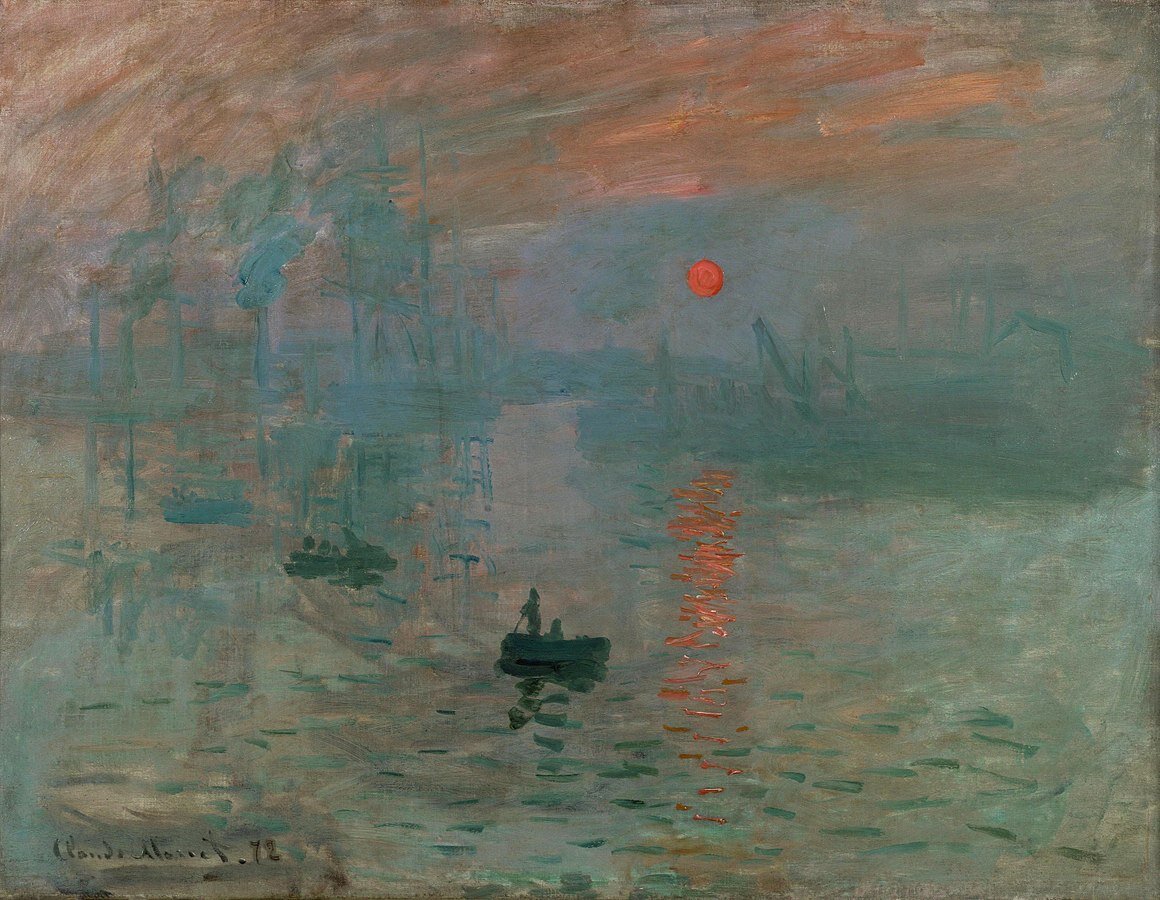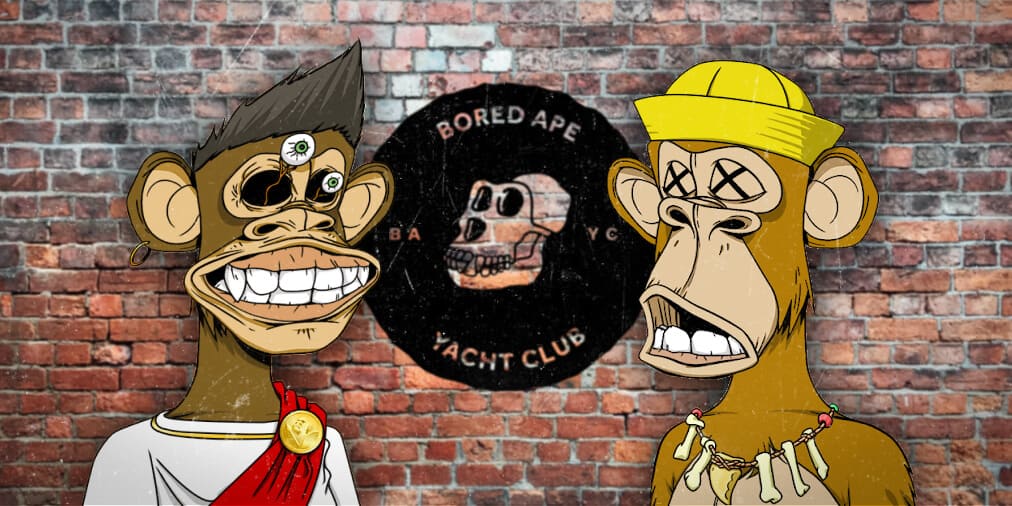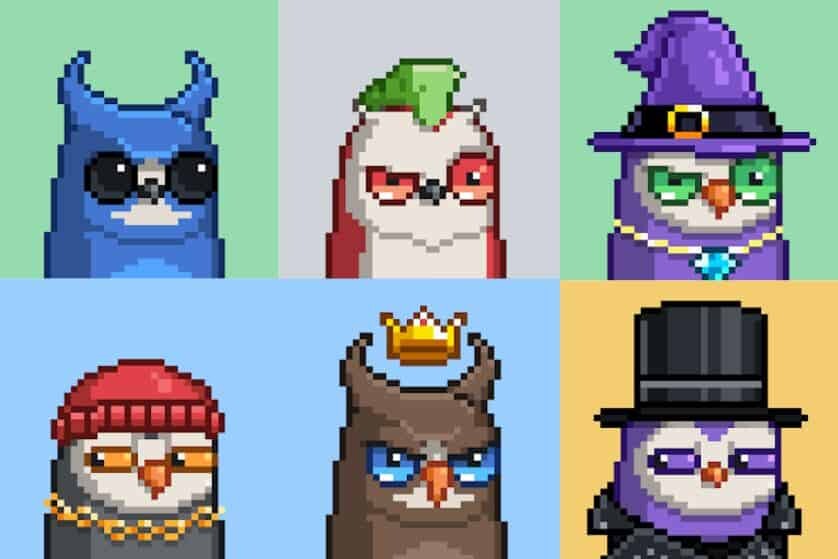Understanding NFT Art: Its Definition, Functionality, and Implications.

When we delve into the realm of NFT art, it's essential to look back to the past. In 1874, at Félix Nadar's studio in Paris, art that had been snubbed by conventional critics was displayed, providing an alternative to the mainstream Salon de Paris, which showcased works endorsed by the Académie des Beaux-Arts.
This venue was the stage for pioneering artists like Edgar Degas, Auguste Renoir, and Claude Monet—the latter being a major figure who introduced transformative concepts to the art world. Their innovative styles initiated the Impressionist movement, heralding a new chapter in art history and paving the way for modern artistic expression.

As we observe the rising influence of NFT art today, we might be witnessing another significant evolution in the art landscape.
Table of contents
- So, what is NFT art?
- What can be turned into an NFT?
- What does it mean for creators?
- What does NFT stand for?
- Are NFTs scams? Will it die out?
- Are NFTs bad for the environment?
- What is the technology behind NFTs?
- Why are NFTs the future?
- How do artists price NFTs?
- Notable NFT Projects
- Frequently asked questions
- When was the first NFT created?
- Can an NFT be a photo?
- Are NFTs illegal?
- Are NFTs taxed?
- Can NFTs be stolen or copied?
- Can NFT metadata be changed?
- Why do NFTs have value?
- Can NFTs lose value?
- Why is NFT art bad?
- Why are NFTs good?
- Why will NFTs fail?
- Where are NFTs stored?
- Will NFTs die, crash, or have a bubble burst?
- Why are NFTs stupid?
- What is an NFT gas fee?
- Can films and MP4 be NFTs?
So, what is NFT art?
In the most straightforward terms, digital art has now found a place within blockchain technology. Previously, digital artists faced challenges since their work could be easily duplicated and shared endlessly. In the digital space, there weren't true originals, just endless copies. However, NFTs introduce a new paradigm: by tokenizing art on a blockchain, it acquires a unique identity. Artists can now own and market the original piece online.
Just like traditional artworks such as sculptures or paintings, digital creations can now attain exclusivity. When it comes to NFTs, they become non-fungible. A jpg may be replicable, but an NFT stands alone. Much like there is only one Monet’s 'Impression, Sunrise,' there can only be a singular token tied to a specific digital artwork.
What can be turned into an NFT?
The versatility of NFTs allows any creative medium to be transformed into a token. Whether it’s a still photo, a digital illustration, a video, or a piece of music, the potential is virtually limitless.
This opens the door for artists to experiment with diverse media formats and mixed techniques for their creative projects. Digital art is not constrained by the same limitations as traditional forms, allowing for richer exploration. freedom of expression Often, digital art pushes boundaries, embracing experimentation in fresh and exciting ways.
What does it mean for creators?
NFTs also present an opportunity for artists to connect directly with their audience, offering a way for fans to acquire their work. This format is relatively inclusive; artists can utilize free tools to bring their visions to life and mint them without incurring significant upfront costs. Unlike traditional art where substantial financial investments are required, creators can thrive and sustain themselves from their art without hefty initial outlays.
Moreover, they are free to operate without intermediaries. There’s no need to negotiate with auction houses or satisfy gallery demands. Instead, artists can reach out directly to crypto communities and their supporters.
What does NFT stand for?
Though the term 'non-fungible token' may sound complex, it’s worth clarifying its meaning.
Let’s first unpack the concept of fungibility. Cryptocurrencies and standard currency notes are fungible. In layman’s terms, if you possess a bitcoin, it can seamlessly be exchanged for another bitcoin. Each is equivalent; when you make a trade, the specific coin you select holds no particular significance.
Conversely, 'non-fungible' signifies uniqueness. One NFT cannot simply be swapped with another. Just like there is only one version of the Mona Lisa, there exists only one CryptoPunk #8531. Each NFT is distinct, and even within the same series, the economic values can vastly differ.
Consider CryptoPunks, for example: While the average price over the last week has fluctuated, CryptoPunk #8531 recently sold for an eye-popping $905.7k. just $74.2k NFTs are classified as digital assets, and while there’s nothing inherently malicious about them, just like in all areas of life, there are some bad actors.
Are NFTs scams? Will they die out?
Fraudsters lurk everywhere on the internet, and the NFT space is unfortunately not an exception. To shield yourself from scams, always verify the links you click and refrain from sharing your wallet credentials or passwords. Typically, if an offer seems too good to be true, like an unexpected airdrop of a highly sought-after NFT, it’s a warning sign to stay alert.
As NFTs continue to evolve, it’s hard to predict their future trajectory. However, they seem poised to expand their applications rather than fade away. Their utility is on the rise; they can be utilized for tickets, legal documentation, and serve as proof of ownership, among other functions.
While NFTs aren't fundamentally harmful to the environment, their creation process, known as minting, can consume significant amounts of electricity, leading to considerable CO2 emissions that contribute to climate change. Nevertheless, this outcome isn’t inevitable.
Are NFTs bad for the environment?
Depending on preferences and budget considerations, individuals can minimize or even entirely eliminate their carbon footprint during the minting process. Selecting eco-friendlier options for blockchain minting, such as Polkadot or Cardano, can help. There are even platforms with zero emissions available today. Ethereum, the most widely used blockchain, is also on a journey to greater sustainability with its upcoming Ethereum 2.0 update, which will employ a more energy-efficient system.
A blockchain, in straightforward terms, is a shared digital ledger that’s available to anyone online. This database is decentralized, making it challenging to alter or hack, and is inherently more sophisticated than conventional data storage systems. low-emission blockchains The applications of NFTs are vast, and we’re only just starting to scratch the surface of their potential. While they originated as collectibles and artistic expressions, their capacity goes well beyond all that, which is why they are likely here for the long haul. This isn’t to say that the NFT art scene is diminishing—exciting new projects are being launched on a daily basis. Yet, carbon-neutral Solana blockchain NFTs are progressively entering the domain of online gaming, with plans already in motion to incorporate NFT tickets, and Olympic organizers are even contemplating NFT ticketing for the Paris 2024 Games. In addition, the UK government has approved the use of NFTs to deliver legal documents, allowing individuals to file suits via blockchain technology. 99.95% less energy than it does now.
What is the technology behind NFTs?
Ultimately, the choice rests with the artist. There's no universal formula. When determining the price of your NFT, it's crucial to factor in transaction costs and potential gas fees to avoid financial loss. Whether an artist decides to price their new NFT at $10 or $1,000 is a matter of personal choice. If they believe their work will resonate well in the market, they can aim high; whereas emerging artists might benefit from pricing their pieces affordably to build visibility and garner future profits.
Why are NFTs the future?
Let's dive into some of the more distinguished NFT projects around today. The Bored Apes made headlines by transforming a well-known graffiti work in New York. , fashion,
NFTs can be used as tickets: Qatar Airways The Bored Ape Yacht Club (BYAC) is one of the most renowned collections of generative art crafted by Yuga Labs. This collection features 10,000 distinct Bored Ape NFTs that were minted on the Ethereum blockchain. However, these tokens represent more than mere artistry; they also serve as exclusive membership cards for the Yacht Club, granting holders access to special perks. Following its success, Yuga Labs introduced other successful ventures such as the spin-off collection, Mutant Apes and Kennel Dogs.
How do artists price NFTs?
Numerous celebrities have embraced the Bored Apes, including iconic figures like Snoop Dogg, Eminem, Madonna, and Paris Hilton. Notably, Snoop Dogg and Eminem collaborated with BYAC, producing a captivating music video for their 2022 track, 'From The D 2 The LBC.'
Notable NFT Projects
Eminem & Snoop Dogg - From The D 2 The LBC [Official Music Video]
Bored Ape Yacht Club (BYAC)

CryptoPunks is another generative art series that has achieved immense fame. Similar to the BYAC, it comprises 10,000 distinct individuals. Created by Larva Labs, which is now owned by Yuga Labs, this collection was rapidly snapped up, with certain designs fetching jaw-dropping sale prices, including the highest-grossing token that sold for
Moonbirds are also making waves by announcing the release of Oddity NFTs for 'nested' owls.
CryptoPunks

One of Pak's generative pieces developed alongside its sales—from the moment collectors purchased shares, the artwork's final appearance was defined. The creation displays three white forms against a stark black backdrop. The more buyers participated, the more prominent the forms became. It remains the most valuable NFT ever traded. generated characters On the other hand, one of Beeple's pieces—a collage composed of 5,000 individual works created over several years—sells for eye-watering sums. $23.7 million.
Moonbirds

The concept of NFTs first surfaced in a 2012 publication by Meni Rosenfield, detailing an idea called 'Colored Coins'—it would take several years before this concept materialized fully. The inaugural NFT was introduced in 2014, when artists Kevin McCoy and Anil Dash minted 'Quantum' on the Namecoin blockchain. reached 100,000 ETH 'Quantum' by Kevin McCoy and Anil Dash. Source: mccoyspace.com/ launched an accompanying NFT collection– Moonbirds Oddities Exploring NFT Art: Understanding Its Functionality, Significance, and Implications - Metaverse Post
Top-grossing projects
To comprehend the impact of NFT art on the art landscape today, let’s take a moment to reflect on history. Back in 1874, in Paris, the photography studio owned by Félix Nadar showcased artwork that had faced rejection from the conventional art establishment. generative art projects Exploring NFT Art: Understanding Its Functionality, Significance, and Implications
Metaverse Post » NFT Art: Understanding Its Functionality, Significance, and Implications - Comments Section
FTC's Attempt to Halt Microsoft-Activision Merger Denied
For an enhanced experience in your local language, we sometimes utilize an automated translation tool. Please keep in mind that this translation may not always be entirely accurate, so proceed with caution. here .
When was the first NFT created?
Can an NFT be a photo?
When engaging in conversations about NFT art and its potential implications for the art world, it is insightful to examine the past. In 1874, Félix Nadar's Parisian photography studio presented works that were turned away by the conventional art circle. It served as an alternative venue to the Salon de Paris, which was the official exhibition of the Académie des Beaux-Arts. Are NFTs illegal? This venue was pivotal for innovative artists like Edgar Degas, Auguste Renoir, and the pioneer of impressionism—Claude Monet—who showcased their groundbreaking pieces there. Their contributions would eventually reshape the art scene and usher in the modern era.

Today, as the world of NFT art flourishes, we might be witnessing another pivotal moment in the evolution of artistic expression. Can NFTs be stolen or copied? .
In essence, digital artwork has found its place on the blockchain. Historically, one of the main challenges faced by digital artists was the ease with which their work could be duplicated and multiplied. In the realm of digital art, what constitutes an 'original' was often nebulous, as only duplicates seemed to exist. Nonetheless, NFTs provide a much-needed solution. By recording an artwork on a blockchain, it gains a unique identity. The artist can now retain ownership and sell their work in a digital arena.
Can NFT metadata be changed?

Can NFTs lose value?
Any form of creativity, be it photographs, digital art, videos, or sound clips, can be transformed into an NFT. The possibilities are virtually limitless when it comes to medium and format.
This newfound freedom enables artists to explore fresh techniques and combinations or even venture into mixed media. The constraints that traditional art imposes are less restrictive, allowing for a richer exploration of creativity. Why is NFT art bad? Often, digital art pushes boundaries, embracing experimentation in fresh and exciting ways.
Why are NFTs good?
Digital art often embraces experimentation, pushing boundaries and delving into the innovative possibilities that new media offers. Why will NFTs fail? NFTs can foster closer ties between artists and their audiences, making it easier for fans to support and purchase art directly. This contemporary medium is also quite accessible; artists can utilize free tools to create and mint their artworks on the blockchain without any initial investments. Unlike the traditional art market that often necessitates substantial financial commitments upfront, NFT creators can thrive and sustain their livelihoods without needing a hefty startup budget. Where are NFTs stored? Will NFTs die, crash, or have a bubble burst?
Moreover, artists can bypass intermediaries entirely. They are not required to seek the approval of auction houses or galleries; instead, they have the ability to connect directly with crypto communities and their fanbase. Why are NFTs stupid? The term 'Non-fungible token' may sound perplexing at first, but let’s break it down. What is an NFT gas fee? Starting with fungibility, both cryptocurrencies and traditional currencies share this characteristic. In simple terms, if you possess a bitcoin, you can swap it for another bitcoin. The value remains constant; it doesn't matter which one you choose during a transaction.
'Non-fungible,' however, denotes uniqueness. No two NFTs are the same; one NFT cannot be substituted for another. Just like there is only one original Mona Lisa, there is only one CryptoPunk #8531. Each token has its own distinctive characteristics and cannot simply be traded for another token, even those from the same set might have vastly differing values.
Can films and MP4 be NFTs?
Consider CryptoPunks as an example: While the average market price for these unique tokens fluctuates, CryptoPunk #8531 recently fetched an astonishing $905.7k.
So, what is NFT art?
NFTs can be viewed as a type of digital asset that, contrary to some misgivings, aren’t inherently fraudulent or malicious. However, it’s essential to recognize that, like any domain, there are unscrupulous individuals.
Scammers lurk everywhere online, and unfortunately, the NFT domain is not immune to their tactics. To stay safe, it's crucial to always verify links before clicking on them and never share your wallet password with anyone. When encountering deals that seem to be too good to be true—like unexpected NFT giveaways—exercise extreme caution.
What can be turned into an NFT?
NFTs are a relatively new phenomenon, and their future remains uncertain. While they are set to evolve and acquire more applications, it seems highly unlikely that they will become obsolete. The utility of NFTs is expanding; they are now being utilized for tickets, legal documents, and provided as evidence of ownership.
freedom of expression
It's incorrect to label NFTs as detrimental to the environment in essence; however, their creation process, known as minting, can indeed consume a significant amount of energy and contribute to CO2 emissions, exacerbating climate change. But this situation is not set in stone.
What does it mean for creators?
Depending on your personal choices and financial capabilities, you have the means to lessen or completely eliminate your environmental impact. Opting for greener blockchains like Polkadot or Cardano during the minting process can significantly mitigate your carbon footprint. There are even entirely carbon-neutral alternatives.
What does NFT stand for?
Ethereum, the premier blockchain, is also making strides toward sustainability—Ethereum 2.0 promises to adopt more eco-friendly practices.
just $74.2k
Simply put, blockchain serves as a shared digital ledger that individuals can access online. This distributed system is tough to modify, and its complexity makes it far more secure compared to traditional databases.
Are NFTs scams? Will they die out?
The potential applications of NFTs are vast and still unfolding. What began as collectibles and digital art pieces has expanded into a myriad of other uses, ensuring their longevity in the digital landscape. It's not to say that NFT art is fading; intriguing new projects debut daily. However,
Are NFTs bad for the environment?
NFTs have also made inroads into online gaming, with plans to introduce NFT tickets as an option, while organizers of the 2024 Paris Olympics are contemplating NFT tickets as well. Furthermore, the UK government has approved the use of NFTs to serve legal notifications, allowing individuals to initiate legal actions via blockchain technology.
low-emission blockchains
Ultimately, it’s up to the artist to dictate the pricing of their NFT. There’s no standardized formula; artists need to be mindful of transaction fees and gas costs to avoid losses. They have the flexibility to decide whether they want their latest NFT to retail for $10 or $1,000. If a creator feels confident about their work's viability in the market, they can set a premium price. Conversely, emerging artists might consider keeping prices reasonable to attract interest and ultimately enhance their reputation for future sales.
carbon-neutral Solana blockchain
Let's take a glance at some of the most prominent NFT projects currently making waves. 99.95% less energy The Bored Apes series transformed a well-known piece of graffiti art from New York into digital collectibles.
The Bored Ape Yacht Club (BAYC), crafted by Yuga Labs, represents one of the most distinguished collections of algorithmic art, comprising 10,000 unique Bored Ape NFTs minted on the Ethereum blockchain. These tokens go beyond mere art; they function as a membership card granting access to exclusive benefits. Following its triumph, Yuga Labs has broadened its portfolio with successful ventures like the Mutant Apes and Kennel Dogs collections. What is the technology behind NFTs? Why are NFTs the future?
, fashion,
Several high-profile celebrities, including Snoop Dogg, Eminem, Madonna, and Paris Hilton, have joined the ranks of Bored Ape owners. In fact, Snoop Dogg and Eminem collaborated with BAYC to create a music video inspired by their collection for their song \"From The D 2 The LBC\" released in 2022.
NFTs can be used as tickets:
Eminem & Snoop Dogg - From The D 2 The LBC [Official Music Video]
Exploring the 10 most expensive NFT sales ever recorded Qatar Airways .
How do artists price NFTs?
reached 100,000 ETH
launched an accompanying NFT collection– However, NFTs are more than just digital collectibles. Let’s delve into some iconic and high-grossing art projects. The three highest-grossing NFTs to date include two artworks from Pak and one from Beeple. These artists are among the most recognized figures in the NFT landscape, celebrated for their unique artistic approaches.


